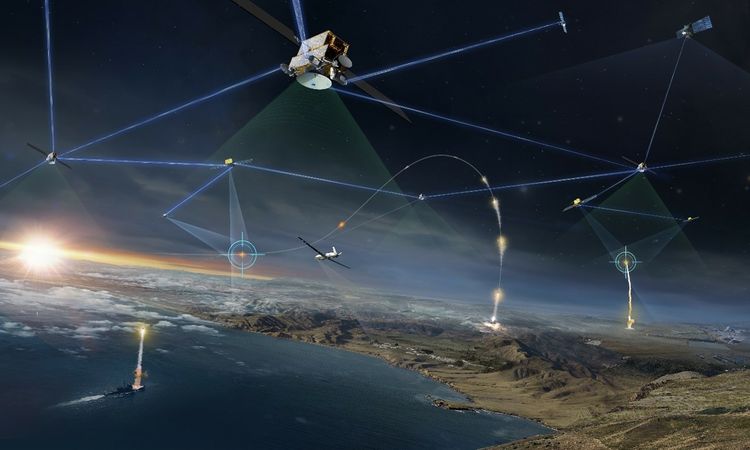Latest News
SDA Official: ‘We’re Not Going to Pick the Winners. The Winners Are Going To Deliver.’

Northrop Grumman’s rendering of the Space Development Agency Tranche 1 Transport Layer mesh network. Photo: Northrop Grumman
The Space Development Agency (SDA) wants to use spiral development to field small satellites for military use every two years — a fraction of the time required for large Department of Defense (DoD) acquisition programs, and SDA is using a biannual “warfighter council” to inform evolving SDA requirements with the participation of military space operators.
“The thing that SDA is trying to do that is so different is to meet the number one problem we hear from industry, which is that they don’t know what the government wants,” Paula Trimble, SDA’s policy chief and legislative affairs director, told a virtual Atlantic Council forum on the use of small satellites for national security on May 5. “We broadcast regularly, not only what we want, but how often we’re going to ask for it.”
“This spiral development approach is a real thing,” she said. “We are going to launch constellations of satellites every two years on schedule, and we’re going to tell you how many satellites we need, what they need to do. We want to stimulate a market and capitalize on what is happening in every element of the commercial sector. The commoditization of satellite buses is something that the government benefits from, and we want to leverage that. It brings down the cost of our satellites. It allows us to do this quickly. It allows us to leverage manufacturing processes that are common in meeting commercial satellite orders, and then engage on the mission specific piece as something that might take a little bit longer, but we’re going to leverage whatever we can to go fast.”
“The whole idea is that we’re not going to pick the winners,” Trimble said. “The winners are going to deliver.”
The SDA in August 2020 awarded Lockheed Martin and York Space Systems contracts to each build 10 small satellites as the initial element of the SDA’s transport layer – a new constellation of spacecraft aimed at connecting satellites in low earth orbit to serve the tactical communications needs of U.S. forces more rapidly.
The satellites will begin launching this September, and the constellation is to be on orbit early in 2023. The Tranche 0 satellites will essentially prove out the capability of the transport layer of satellites and are paving the way for subsequent tranches.
Commercial space companies are assuming a larger role in aiding military forces, including SpaceX‘s integral involvement in National Security Space Launch and in the National Reconnaissance Office’s use of commercial remote sensing imagery. Commercial imagery ferreted out preparations by Russia for its Feb. 24 assault on Ukraine, and SpaceX has sent communications terminals to allow Ukrainians to access information about the invasion without Russian interference.
SDA’s approach to use what works represents an opportunity for small, commercial companies and a possible model for DoD overall.
“The traditional acquisition system actually ends up reinforcing failure because you get paid more when you don’t deliver something,” Paul Graziani, the chief executive officer of the Pennsylvania-based space situational awareness company, COMSPOC, said during the May 5 Atlantic Council forum “The commercial world is the opposite. In the commercial world, you don’t get paid at all until you have something that works. Then you start getting paid, and the difference between those two models is why commercial just crushes at these things–not stealth bombers, and not aircraft carriers, but the things that take a lot of rapid innovation.”
“Get focused on mission,” Graziani said of DoD acquisition. “As you look at the traditional procurement systems, the most important thing is to keep the program sustained. It’s a bizarre thing … As soon as you deliver the mission, the program goes away, but your entire system — tens of thousands of people and all these different organizations – are driven to keep the program going, and it starts in Congress with billions of dollars flowing down and goes all the way through the whole system, and that becomes the focus, not the mission.”
This story was first published by Via Satellite sister outlet Defense Daily.
Stay connected and get ahead with the leading source of industry intel!
Subscribe Now